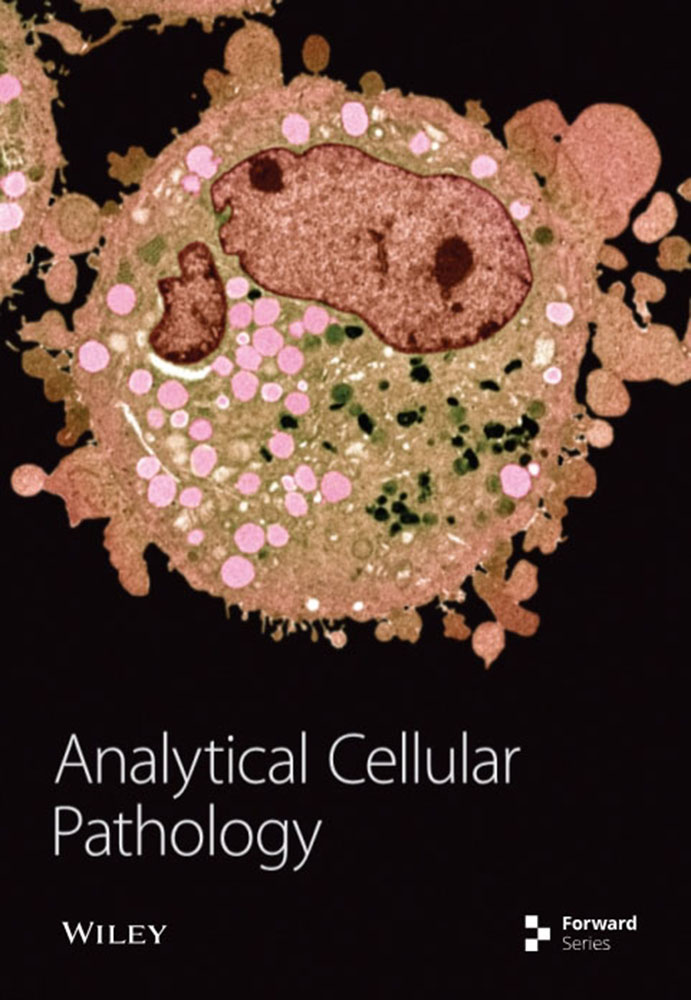The Clinical and Pathological Effects of Serum C3 Level and Mesangial C3 Intensity in Patients with IgA Nephropathy
IF 2.7
4区 医学
Q3 CELL BIOLOGY
引用次数: 0
Abstract
Objective. To investigate the clinical and pathological effects of serum C3 level, mesangial C3 deposition intensity and blood lipid on IgA nephropathy. Methods. According to the deposition intensity of immunofluorescence (IF) complement C3 in mesangial region, a total of 151 patients were divided into: (1) negative group (65 cases), (2) weak positive group (51 cases), and (3) strong positive group (35 cases). According to the level of serum C3, the patients were divided into two groups: (1) 33 patients with decreased serum C3 (<85 mg/dL); (2) 118 patients with normal serum C3. The clinicopathological data of the patients were analyzed retrospectively according to the groups. Results. (1) With the increase of C3 deposition in mesangial region, the mean value of serum C3 level decreased, and the difference was statistically significant (). (2) Compared with the normal serum C3 group, the blood urea nitrogen (BUN), serum creatinine (Scr), and albumin (Alb) in the serum C3 decreased group were higher, and the differences were statistically significant (), while the fasting blood glucose (FBG), low-density lipoprotein (LDL), triglyceride and 24-hr urinary protein (24hUTP) were lower, which difference was statistically significant (). (3) Compared with negative group and weak positive group, BUN, uric acid (UA), and Scr were higher in the strong positive group with C3 deposition, while eGFR was lower, with statistical significance (). However, C3 deposition in the mesangial region was related to T and enhanced mesangial C3 deposition was associated with more severe tubular atrophy and/or interstitial fibrosis, with statistically significant differences (). Conclusion. Patients with strong mesangial C3 deposition and elevated lipid levels had more severe tubule atrophy and/or interstitial fibrosis, as well as more severe pathological lesions, suggesting that activation of the complement system is involved in the pathogenesis of IgA nephropathy and increases the metabolic burden of the kidney.IgA 肾病患者血清 C3 水平和间质 C3 强度对临床和病理的影响
目的探讨血清 C3 水平、系膜 C3 沉积强度和血脂对 IgA 肾病的临床和病理影响。方法根据免疫荧光补体 C3 在系膜区的沉积强度,将 151 例患者分为:(1) 阴性组(65 例);(2) 弱阳性组(51 例);(3) 强阳性组(35 例)。根据血清 C3 水平将患者分为两组:(1) 33 例血清 C3 降低(85 mg/dL)患者;(2) 118 例血清 C3 正常患者。按照组别对患者的临床病理数据进行回顾性分析。结果(1)随着系膜区C3沉积的增加,血清C3水平均值下降,差异有统计学意义()。(2)与血清 C3 正常组相比,血清 C3 下降组的血尿素氮(BUN)、血清肌酐(Scr)和白蛋白(Alb)升高,差异有统计学意义(),而空腹血糖(FBG)、低密度脂蛋白(LDL)、甘油三酯和 24 小时尿蛋白(24hUTP)降低,差异有统计学意义()。(3)与阴性组和弱阳性组相比,C3 沉积强阳性组的 BUN、尿酸(UA)和 Scr 较高,而 eGFR 较低,差异有统计学意义()。然而,系膜区的 C3 沉积与 T 有关,系膜 C3 沉积增强与更严重的肾小管萎缩和/或间质纤维化有关,差异有统计学意义()。结论间质C3沉积较强和血脂水平升高的患者有更严重的肾小管萎缩和/或间质纤维化,以及更严重的病理病变,这表明补体系统的激活参与了IgA肾病的发病机制,并增加了肾脏的代谢负担。
本文章由计算机程序翻译,如有差异,请以英文原文为准。
求助全文
约1分钟内获得全文
求助全文
来源期刊

Analytical Cellular Pathology
ONCOLOGY-CELL BIOLOGY
CiteScore
4.90
自引率
3.10%
发文量
70
审稿时长
16 weeks
期刊介绍:
Analytical Cellular Pathology is a peer-reviewed, Open Access journal that provides a forum for scientists, medical practitioners and pathologists working in the area of cellular pathology. The journal publishes original research articles, review articles, and clinical studies related to cytology, carcinogenesis, cell receptors, biomarkers, diagnostic pathology, immunopathology, and hematology.
 求助内容:
求助内容: 应助结果提醒方式:
应助结果提醒方式:


